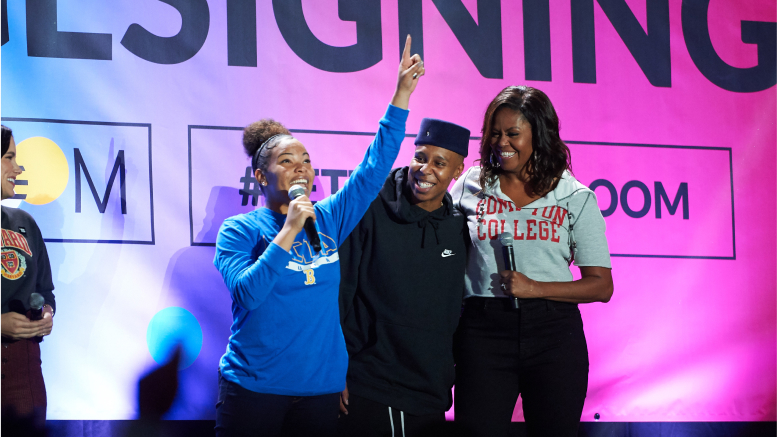
The Visiting Dignitary Policy (UCLA Policy 106) governs the university approach to managing dignitary visits to our campus.
Designed to ensure every visit is meticulously coordinated and event objectives are achieved, these guidelines apply to all dignitary visits, whether initiated by the university or requested by an external entity. With this policy, the university aims to create memorable and impactful experiences for esteemed guests while upholding the highest standards of organization and hospitality.
The Visiting Dignitary Request Form must be completed and submitted to Strategic Communications Events and Experiential Marketing before committing to any dignitary visit. The Chancellor has placed administrative responsibility for dignitary visits with Strategic Communications, to serve as the office of record and campus resource for protocol and assistance for dignitary visits.
Please send the completed form to Tricia Lippert. If the visit involves an international dignitary, send to both Tricia Lippert and Christine Larson in the International Institute. Once approved, for domestic dignitaries, please check in and consult with Government and Community Relations before making an invitation at ADVOCACY@support.ucla.edu.
The Chancellor reserves the right to extend invitations to high-profile dignitaries, including but not limited to, the sitting or former president of the United States and high-ranking representatives of foreign governments. Dignitaries may be defined as, but are not limited to, any of the following:
- Current or former chiefs of state/heads of government or their spouses
- High-ranking members of royalty
- United Nations secretary general
- High-ranking representatives of foreign governments
- Religious or spiritual leaders, such as the Pope
- United States Cabinet members
- United States members of Congress (senators and representatives)
- California governor and/or first spouse
- Mayor of Los Angeles
- President of the University of California
- Regents of the University of California
If the visiting dignitary does not fall into one of these categories, you must still submit the Visiting Dignitary Request Form in advance so the Chancellor’s Office can be advised, protocol guidance may be provided and impacted campus departments may be notified.
Once your request has been received, Strategic Communications Events and Experiential Marketing will consult with the Chancellor to determine his involvement, including but not limited to his extending the invitation and his participation in the visit.
In addition to the Chancellor reserving the right to extend the invitation to any dignitary, his role may also include:
- Personally extending invitation letters to dignitaries
- His name included as host/co-host on any printed invitations sent to guests
- Greeting dignitaries and their delegations upon their arrival
- Providing welcome remarks and introducing the dignitary at any program
- Presenting any honors bestowed upon the dignitary
The Chancellor may recommend his role be conducted by another appropriate university official of his designation. Strategic Communications Events and Experiential Marketing will advise on the appropriate protocol.
Before UCLA departments/units consider sponsoring a dignitary visit to campus, be aware that dignitary visits, at any level, may involve significant costs, including security. These costs are the responsibility of the UCLA department or unit sponsoring the visit. Prior to submitting a Visiting Dignitary Request Form, the requesting unit must ensure there is adequate funding to host these events. It is recommended you consult with Tricia Lippert, director of Strategic Communications Events and Experiential Marketing, early in your planning to avoid unanticipated expenses that could negatively impact your event.
There are campus departments, such as Parking, UCPD, etc., that must be notified of dignitary visits to campus. Upon visit confirmation by the dignitary, Strategic Communications will send out a Visitor Notification email to key campus representatives informing them of potential logistical coordination. The alert is not an invitation or promotion for the event. Please contact Tricia Lippert, Strategic Communications Events and Experiential Marketing, with event details and submit the Visiting Dignitary Request Form.
For dignitary visits, high-profile program participants or honorees, it is appropriate that a gift be presented on behalf of the University in appreciation or to promote goodwill. It is the responsibility of the hosting department to purchase a gift that could be presented by the Chancellor, Executive Vice Chancellor and Provost, or appropriate designate. For more information, refer to the Business and Finance Bulletin G-42, Gifts Presented to Non-Employees on Behalf of the University, which includes information on who may and may not be presented a gift, circumstances on when it is appropriate to present a gift, and gift limits. Additionally, please note that some officials have differing gift acceptance limitations and may not accept gifts.
UCLA Dignitary Gifts
For dignitary visits, high-profile program participants or honorees, it is appropriate that a gift be presented on behalf of the University in appreciation or to promote goodwill. It is the responsibility of the hosting department to purchase a gift that could be presented by the Chancellor, Executive Vice Chancellor and Provost, Vice Provost, Dean or appropriate designate.
Prior to choosing a gift, contact Christine Larson, International Institute, or Tricia Lippert, Strategic Communications Events and Experiential Marketing. Research should be done to inquire about the country’s cultural gift-giving protocol to determine if the gift selection is appropriate. If the Chancellor extends the invitation, an appropriate gift will be determined.
For more information, refer to the Business and Finance Bulletin G-42, Gifts Presented to Non-Employees on Behalf of the University, which includes information on who may and may not be presented a gift, circumstances on when it is appropriate to present a gift, and gift limits. Additionally, please note that some officials have differing gift acceptance limitations and may not accept gifts.
When hosting a high-profile dignitary at your event, the University has established a protocol for greetings and introductions. Please be mindful that one or more of the appropriate university administrators should attend the formal greeting when a high-level dignitary visits UCLA.
